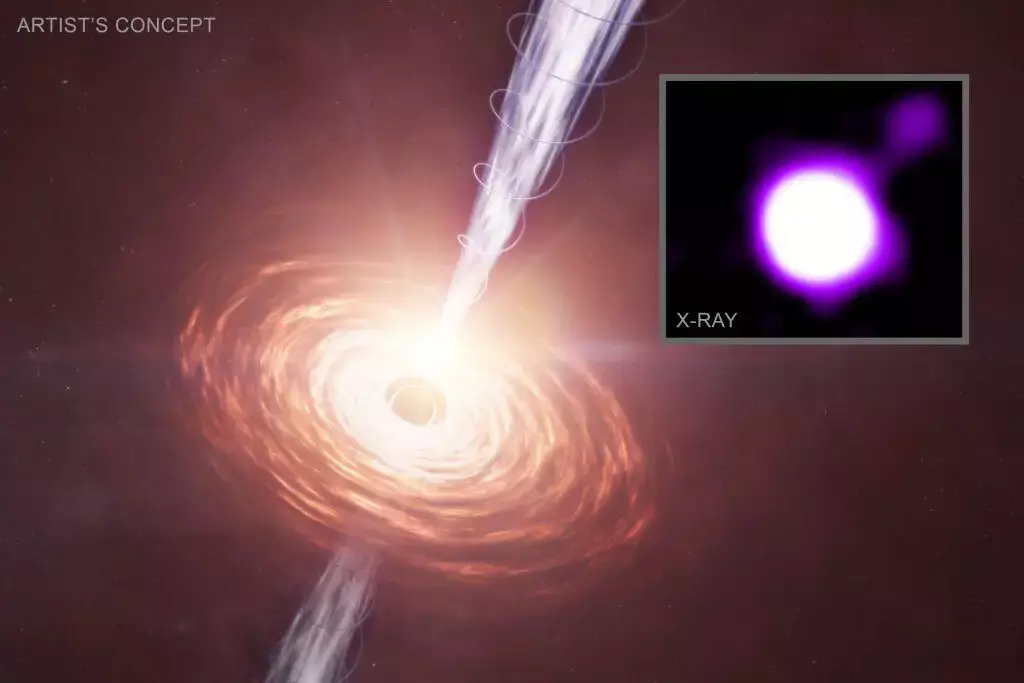Chandra Spots Powerful Black Hole Jet at Cosmic Noon

News Desk: NASA’s Chandra X-ray Observatory, along with the Karl G. Jansky Very Large Array (VLA), has detected two remarkably powerful jets emitted by supermassive black holes in the early universe. The black holes, located about 11.6 and 11.7 billion light-years away, are blasting out jets during a period astronomers call “cosmic noon”—a time roughly three billion years after the Big Bang when galaxies and black holes were rapidly growing. These jets, stretching over 300,000 light-years, were spotted thanks to Chandra’s ability to observe X-rays produced as particles in the jets collide with the dense cosmic microwave background (CMB) radiation—the afterglow of the Big Bang. This interaction boosts microwave photons into the X-ray range, making the jets visible across vast distances. Named J1405+0415 and J1610+1811, the black holes are propelling jet particles at up to 99% the speed of light. The jet from J1610+1811 is especially powerful, carrying about half the energy of the surrounding hot gas near the black hole. Researchers also developed a new statistical method to accurately determine the speed and angle of the jets by factoring in how relativistic effects make jets pointed toward Earth appear brighter. Through simulations, they found the most likely viewing angles: 9 degrees for J1405+0415 and 11 degrees for J1610+1811. The findings, led by Jaya Maithil of the Center for Astrophysics | Harvard & Smithsonian, were presented at the 246th American Astronomical Society meeting and will appear in The Astrophysical Journal. These discoveries offer a rare glimpse into black hole activity during a critical era in cosmic history and demonstrate how ancient light can still reveal powerful forces shaping the early universe.


